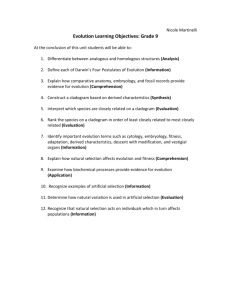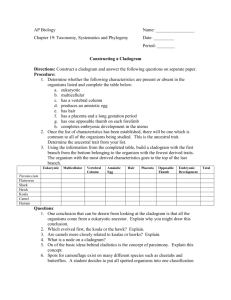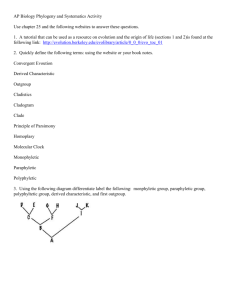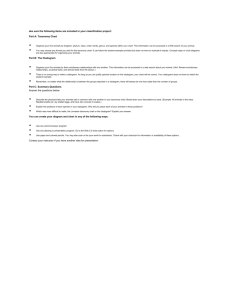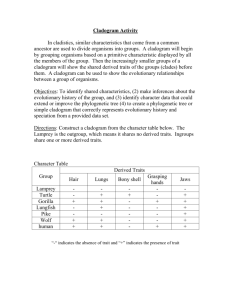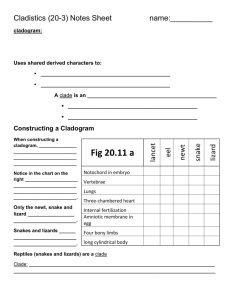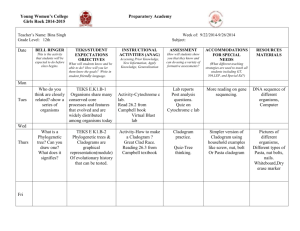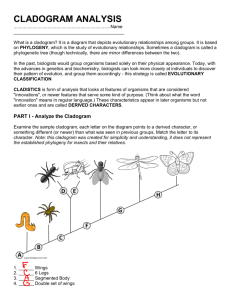Cladogram Analysis Worksheet: Evolutionary Relationships
advertisement
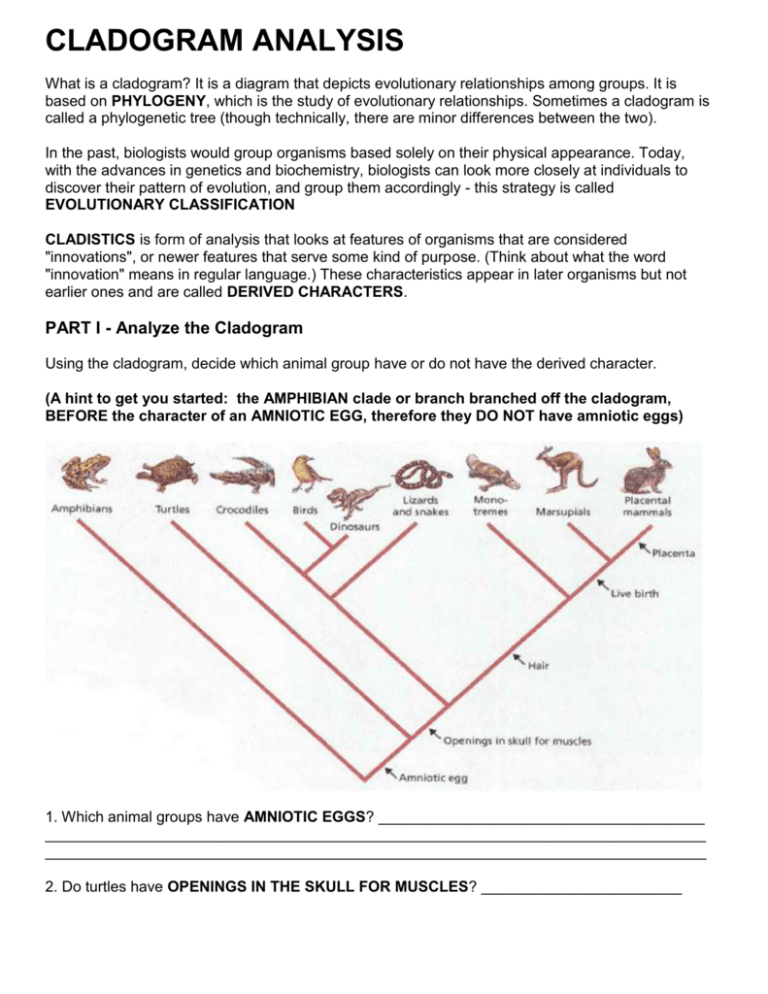
CLADOGRAM ANALYSIS What is a cladogram? It is a diagram that depicts evolutionary relationships among groups. It is based on PHYLOGENY, which is the study of evolutionary relationships. Sometimes a cladogram is called a phylogenetic tree (though technically, there are minor differences between the two). In the past, biologists would group organisms based solely on their physical appearance. Today, with the advances in genetics and biochemistry, biologists can look more closely at individuals to discover their pattern of evolution, and group them accordingly - this strategy is called EVOLUTIONARY CLASSIFICATION CLADISTICS is form of analysis that looks at features of organisms that are considered "innovations", or newer features that serve some kind of purpose. (Think about what the word "innovation" means in regular language.) These characteristics appear in later organisms but not earlier ones and are called DERIVED CHARACTERS. PART I - Analyze the Cladogram Using the cladogram, decide which animal group have or do not have the derived character. (A hint to get you started: the AMPHIBIAN clade or branch branched off the cladogram, BEFORE the character of an AMNIOTIC EGG, therefore they DO NOT have amniotic eggs) 1. Which animal groups have AMNIOTIC EGGS? _______________________________________ _______________________________________________________________________________ _______________________________________________________________________________ 2. Do turtles have OPENINGS IN THE SKULL FOR MUSCLES? ________________________ 3. What characteristics do crocodiles, birds, dinosaurs, lizards, and snakes have in common? _______________________________________________________________________________ 4. How are marsupials different from placental mammals? ________________________________ _______________________________________________________________________________ 5. What is the most primitive characteristic in the cladogram? ______________________________ 6. Which groups have HAIR? _______________________________________________________ 7. Which groups do not have LIVE BIRTH? ____________________________________________ _______________________________________________________________________________ 8. What is the most derived character on the cladogram? _________________________________ PART II - Create Your Own Cladogram To make a cladogram, you must first look at the animals you are studying and establish characteristics that they share and ones that are unique to each group. For the animals on the table, indicate whether the characteristic is present or not. Based on that chart, create a cladogram like the one pictured above. Cells Backbone Legs Slug Catfish Frog Tiger Human DRAWING OF YOUR CLADOGRAM Hair Opposable Thumbs
